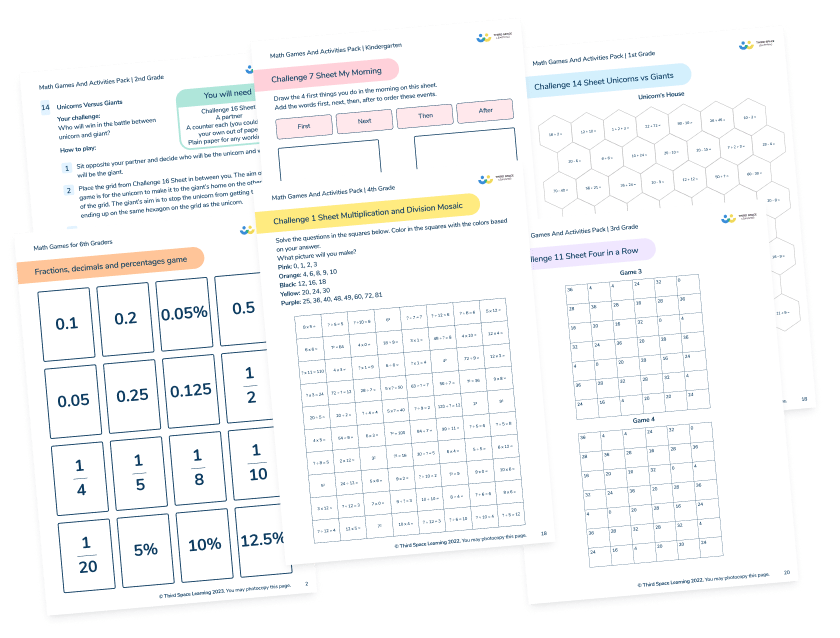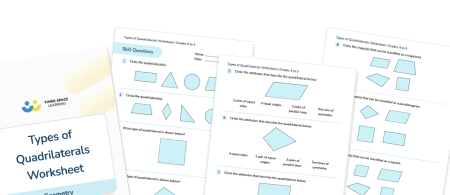Math Shapes: An Elementary Level Overview With Practice Problems & Worked Examples
Math shapes are everywhere in the real world. But what shapes do elementary students learn about in math and why are they important?
This blog covers the most common math shapes learned in the elementary grades including 2D shapes and 3D shapes. It includes a list of geometric shapes, the defining attributes for each basic geometric shape as well as the grade level progression for learning about math shapes.
What are math shapes?
Math shapes are clearly defined shapes with measurable attributes. They are based on shapes in the real world and can be two-dimensional, 2D shapes, or three-dimensional, 3D shapes.
Students learn to categorize 2D and 3D math shapes, also known as basic geometric shapes or geometric figures early on in elementary school.
READ MORE: Shape definition
Types Of Quadrilaterals Worksheet
Types Of Quadrilaterals worksheet for 4th and 5th Graders. Includes 10 skills based practice questions, 5 applied questions, answer key and links to the common core state standards.
Download Free Now!2D and 3D math shapes
Students learn to categorize different shapes into two main categories, 2D and 3D shapes.
Two-dimensional shapes
2D shapes are plane figures that lie on a single plane. 2D plane figures have measurable length, width and area.
Elementary math students learn to define 2D shapes based on:
- The number of sides
- The number of vertices
- Whether they are regular or irregular
Two-dimensional shapes include non-polygons such as circles, and polygons such as triangles, quadrilaterals, pentagons, hexagons, and octagons. Students also learn about heptagons, nonagons and decagons which are less common but still considered polygons.
Three-dimensional shapes
3D shapes are solid figures such as spheres, cubes, cuboids, cones, pyramids, prisms and cylinders.
Three-dimensional shapes have measurable length, width, height/depth and volume.
Elementary math students learn to identify solid figures based on:
- The number and shape of faces
- The number of vertices
- The number of edges
This blog will now look in detail at how students categorize and measure the attributes of shapes, including:
- Length
- Height
- Depth
- Area
- Volume

Meet Skye, the voice-based AI tutor making math success possible for every student.
Built by teachers and math experts, Skye uses the same pedagogy, curriculum and lesson structure as our traditional tutoring.
But, with more flexibility and a low cost, schools can scale online math tutoring to support every student who needs it.
Find out moreTriangles
A triangle is a polygon with three sides and three vertices. The sum of the interior angles of a triangle is 180°.
Students learn about polygon triangles as early as kindergarten, where they define triangles as closed shapes with three sides and three vertices. By third grade, students learn to find the perimeter of triangles.
In fourth grade, students should know the sum of a triangle’s interior angles is 180° and learn to measure angles in triangles and categorize triangles based on angle measures and lines of symmetry.
By sixth grade, students will learn to find the area of various triangles. There are three main types of triangles that students learn about in the elementary grades.
Equilateral Triangle
An equilateral triangle is a triangle with three congruent sides. This means all sides are the same length. Consequently, all three interior angles are the same measure. Equilateral triangles have 3 lines of symmetry.
Equilateral triangles can be seen in the real world, including traffic signs and in the faces of pyramids.
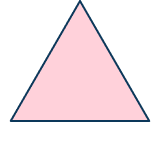
Isosceles Triangle
An isosceles triangle has two congruent sides. The angles on the congruent sides have the same measure. Isosceles triangles only have one line of symmetry.
In the real world the shape of an isosceles triangle can be found in the shape of an evenly cut slice of pizza, or the shape of a coat hanger.
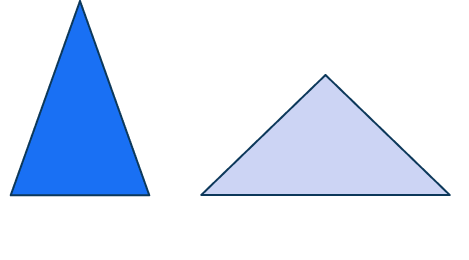
Scalene Triangle
A scalene triangle has no congruent sides or angles. This means that no angles or side lengths are the same measure. Because a scalene triangle has no equal sides, it has no lines of symmetry.
Right triangles (triangles with one angle measuring 90°) are often pictured as scalene, but they can be isosceles too.
Scalene triangles are seen in many real life contexts, including on a boat sail, bridges and architecture.

In the early grades, students learn about triangles using hands-on models such as tangrams and pattern blocks. Tangrams include different triangles and pattern blocks, including an equilateral triangle.
Using these tools helps children make observations about side lengths, number of sides and angles. Learners can also use triangles to create other shapes, such as putting two triangles together to make a rectangle.
Top tip. Teachers can play a game with students as they learn shapes where they put tangrams in a bag and students reach in and grab one without looking. Students feel the shape and notice the sides and vertices before they guess the shape. Learners then pull the shape out of the bag to see if they were correct.
Squares and rectangles
Squares and rectangles are four-sided polygons. Both of these shapes are categorized as quadrilaterals because they are closed shapes with four sides and four vertices.
Both squares and rectangles have four right angles, making them unique from other quadrilaterals.
Because both squares and rectangles have four right angles, the opposite sides of these shapes are congruent and parallel. In other words, they have two pairs of parallel sides and two pairs of perpendicular sides which make the right angles.

The difference between squares and rectangles
By definition, a rectangle is a quadrilateral with four right angles. It can have adjacent sides that are unequal. However, a square must have all four sides congruent (the same measure). Rectangles have two lines of symmetry, whereas squares have four lines of symmetry.
A square is a rectangle because it has the defining properties of a rectangle. However, a rectangle is not always a square. This can be a confusing concept for students to understand as they begin learning about math shapes.
The diagram below helps to clarify how rectangles and squares are categorized.
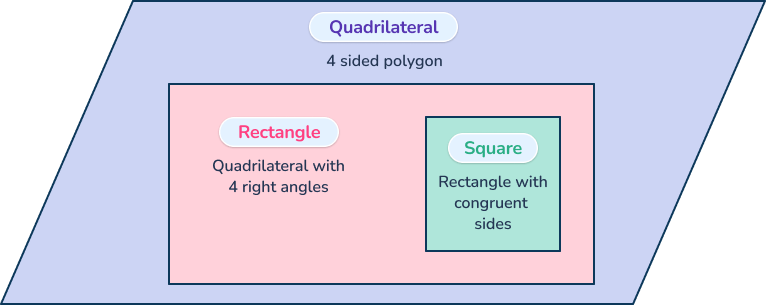
Squares and rectangles are found in many real life contexts such as a piece of paper, a desk, a pan of brownies, a box, a mirror and more.
Children first learn to identify these shapes in kindergarten and first grade and progress to find the perimeter and area of rectangles and squares in third and fourth grade. A rectangle is the foundation for the area model for multiplication which is a helpful visual multiplication model for third and fourth graders.
Teachers can support students make observations about the variety of quadrilaterals through number talks. Alternatively, draw a picture of a quadrilateral on the board (for example a trapezoid) and ask questions such as ‘What do you notice about the shape?’ and ‘What do you wonder about the shape?’ With the goal of students noticing the various attributes of the shape.
As students make observations about the various shapes they learn from each other and deepen their understanding.
Circle
A circle is a curved shape. It has one continuous curved side. Because it has no straight sides, a circle is not considered a polygon. Its curved side means it has infinite lines of symmetry.
Every circle has a midpoint. Each point along the diameter of a circle is equidistant from the midpoint.
Circles can be seen in many real-world objects such as a clock, a wheel, a ring, a dartboard, a pie and more.
Students learn to identify circles in kindergarten and first grade and progress to partitioning circles into equal shares in second and third grade, eventually using circles for fraction models. By seventh grade, students learn how to find the circumference of a circle.
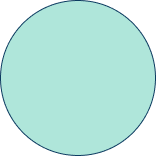
Geometric shapes
Students learn about a variety of other geometric shapes in the elementary grades. They learn about open shapes such as points, lines and line segments, as well as closed shapes, including five, six and seven sided polygons.
Polygons are the most common shapes in elementary because they have measurable linear attributes such as perimeter and area. The most common polygons learned about in the elementary and middle grades are listed in the chart below.
The visual models included represent regular shapes (as opposed to irregular polygons) because these are the most common models that students will see in real life, and the elementary math classroom.

Elementary students also learn about 3D shapes. These solid shapes also have measurable attributes such as length, width, and height or depth.
As students progress through the grades, they learn to measure the volume of these shapes. Here are some of the most common 3D shapes:
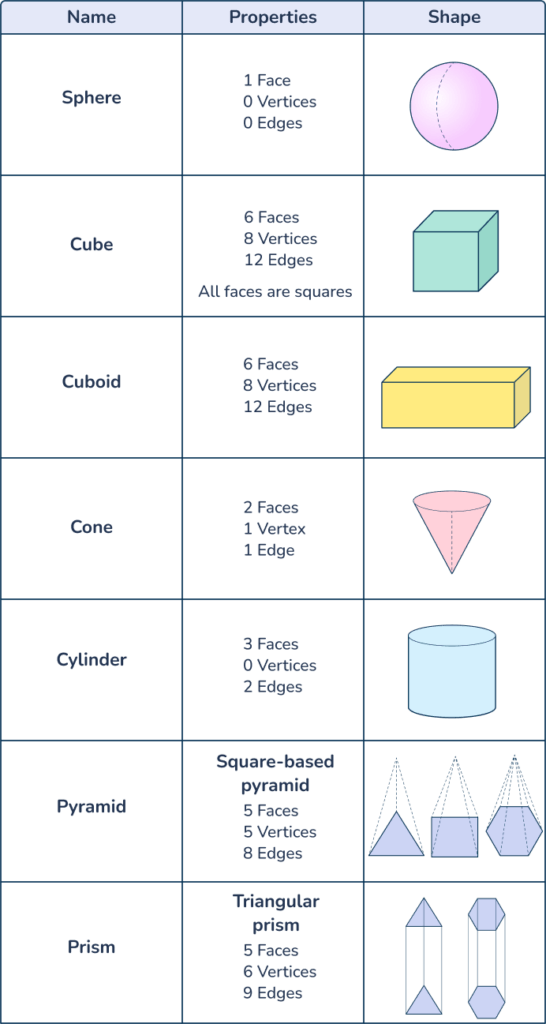
When do students learn about math shapes?
Students learn about math shapes in some form every year in the elementary and middle school grades.
The geometry domain in the common core state standards includes many of the standards related to shapes. Measurement & data also encompass some of the main standards related to math shapes.
In kindergarten and first grade, students learn to identify basic math shapes. In second, third and fourth grade students begin categorizing shapes based on other attributes. For example, in third grade, students learn to name and categorize the various types of quadrilaterals, and by fourth grade students measure the angles of triangles and name the triangles accordingly.
Third and fourth grade students begin finding the perimeter and area of rectangular math shapes. By fifth grade, students find the area of rectangles and the volume of rectangular prisms.
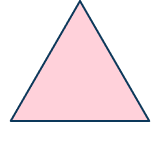
Teachers can support students’ understanding of shapes throughout elementary school by providing opportunities to use hands-on shapes such as pattern blocks, tangrams and even cut out pictures of shapes or models of 3D shapes.
A helpful activity to build an understanding of each shape is a shape sort. Have students sort shapes by various attributes. In younger grades, shape sorting might involve sorting shapes by curved sides and straight sides, or by number of sides. Whereas, upper grades may sort shapes based on the presence or absence of parallel lines, or angle measures.
Teachers should focus on the defining attributes of shape, rather than non-defining attributes such as color, size or orientation.
Math shapes worked examples
Kindergarten & First Grade
Question 1
Look at the shapes below. Which shapes are triangles? Circle all the shapes that are triangles.

Answer: A, C and D are all triangles.
The goal of kindergarten and first grade geometry is for children to be able to identify shapes regardless of their size, color or orientation. So even though C is a smaller triangle than A, and D is in a different orientation, all three shapes are still three-sided closed shapes, which are labelled triangles.
Second Grade
Question 2
What is the name of a shape with 4 sides and 4 angles?
Answer: A quadrilateral.
Students might also answer a rectangle, square, parallelogram, rhombus or trapezoid. This problem focuses on shape identification and gives teachers valuable information about whether students understand the defining attributes of quadrilaterals.
Third Grade
Question 3
Which of the following quadrilaterals is not a parallelogram?
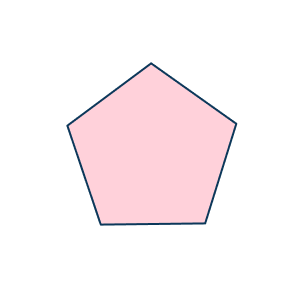
Answer: B is not a parallelogram because it does not have two pairs of parallel sides.
In third grade, students start categorizing shapes based on a hierarchy and learn that while all four of these shapes are quadrilaterals, there are other attributes such as parallel sides, and right angles that make them different within the larger category.
Fourth Grade
Question 4
Look at the triangles below. Which triangle has the most lines of symmetry? Explain.
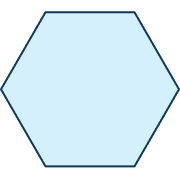
Answer: C
Isosceles triangles (A) have 1 line of symmetry and scalene triangles (B) have 0 lines of symmetry. Equilateral triangles (C) have 3 lines of symmetry. Fourth graders learn to identify lines of symmetry in various math shapes, and specifically learn about the attributes of each type of triangle.
Fifth Grade
Question 5
A rectangular prism has the dimensions 6 inches long by 8 inches wide by 3 inches tall. What will happen to the volume of the prism if you double the length of the prism? Explain.
Answer: The volume of the prism will double from 144 inches to 288 inches.
Students at the fifth grade level learn to find the volume of rectangular prisms following the formula length x width x height. They should be able to visualize and solve for the volume when one dimension is changed.
Math shapes practice problems
When students learn about math shapes, they need to solve problems involving shape identification and measurement that they might see in the real world.
The following examples are math word problems involving shapes that follow a progression from identification to categorization to measurement.
Kindergarten & First Grade
Question 1
Mrs. Nelson was driving on the road. She stopped at a stop sign. What shape is a stop sign? How many sides does that shape have?
Answer: Octagon
Second & Third Grade
Question 2
Rodger noticed that the soccer field is a rectangle. He asked a friend: ‘If the field is a rectangle, is it also a square?’ He also wondered if the soccer field is a quadrilateral. What should Rodger’s friend tell him?
Answer: Explanations will vary but a rectangle is a quadrilateral. A rectangle can be a square if all side lengths are equal. However, a typical soccer field is longer than it is wide so it is not a square.
Third & Fourth Grade
Question 3
The area of a rectangular garden was 24 square feet. What are the possible dimensions for the length and width of this garden? Explain.
Answer: There are many possible answers which include all the factor pairs of 24. This problem assesses students’ knowledge of the formula for area, length x width.
- 1 ft x 24 ft
- 2 ft x 12 ft
- 3 ft x 8 ft
- 4 ft x 6 ft
Fourth and Fifth Grade
Question 4
A medium shipping box at the post office is 24 inches long by 16 inches wide. It is 8 inches tall. What is the volume of the medium shipping box in cubic inches?
Answer: 24 x 16 x 8 = 3,072 cubic inches.
For over 10 years, Third Space Learning has provided one-on-one math sessions to the students who need it most. Now delivered by Skye, the AI maths tutor, students work on the math skills and concepts they need help with in a supportive, online learning environment.
Sessions cover the full range of standards, including Geometry. The AI math tutoring is personalized to students’ needs and are delivered at a pace and pitch suitable for the student.
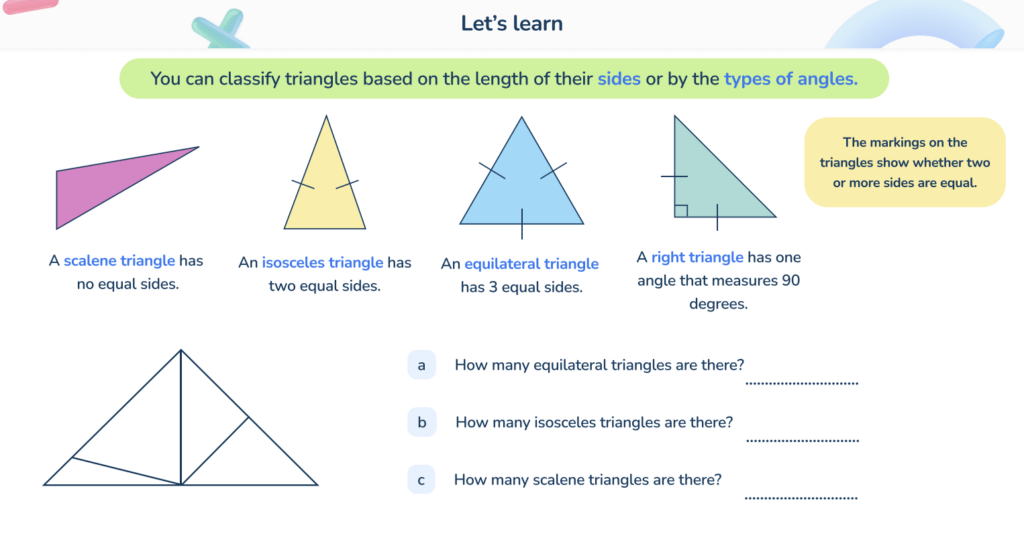
Frequently asked questions
What are the basic math shapes called?
The basic math shapes include plane figures and solid figures. Plane figures are 2d shapes such as circles, triangles, rectangles and squares. Solid figures are 3d shapes such as spheres, cones, pyramids, cubes and cuboids.
What are the 7 basic geometric forms?
The 7 basic geometric forms are often considered to be a point, line, plane, circle, sphere, cylinder and cone. Each of these shapes has defining attributes and is seen within other shapes in geometry.
What is a shape with no sides called?
A shape with no sides is often thought of as a curved shape. For example, it can be argued that a circle or an ellipse has no sides because it has no straight sides. However, some may say that it has one continuous side. Other geometric figures such as a line and ray can also be considered shapes with no sides because they have only one dimension.
Do you have students who need extra support in math?
Skye—our AI math tutor built by experienced teachers—provides students with personalized one-on-one, spoken instruction that helps them master concepts, close skill gaps, and gain confidence.
Since 2013, we’ve delivered over 2 million hours of math lessons to more than 170,000 students, guiding them toward higher math achievement.
Discover how our AI math tutoring can boost student success, or see how our math programs can support your school’s goals:
– 3rd grade tutoring
– 4th grade tutoring
– 5th grade tutoring
– 6th grade tutoring
– 7th grade tutoring
– 8th grade tutoring
